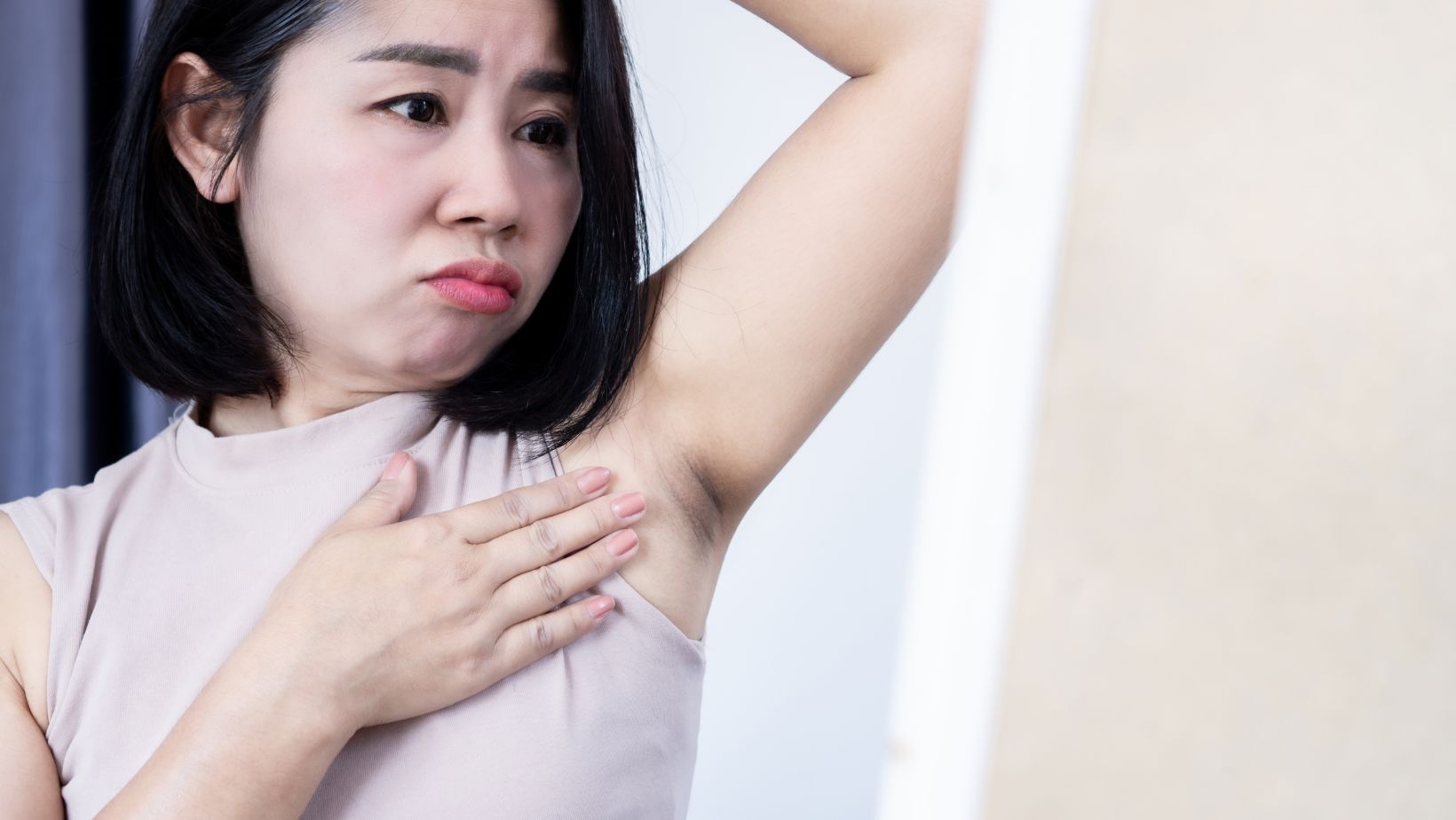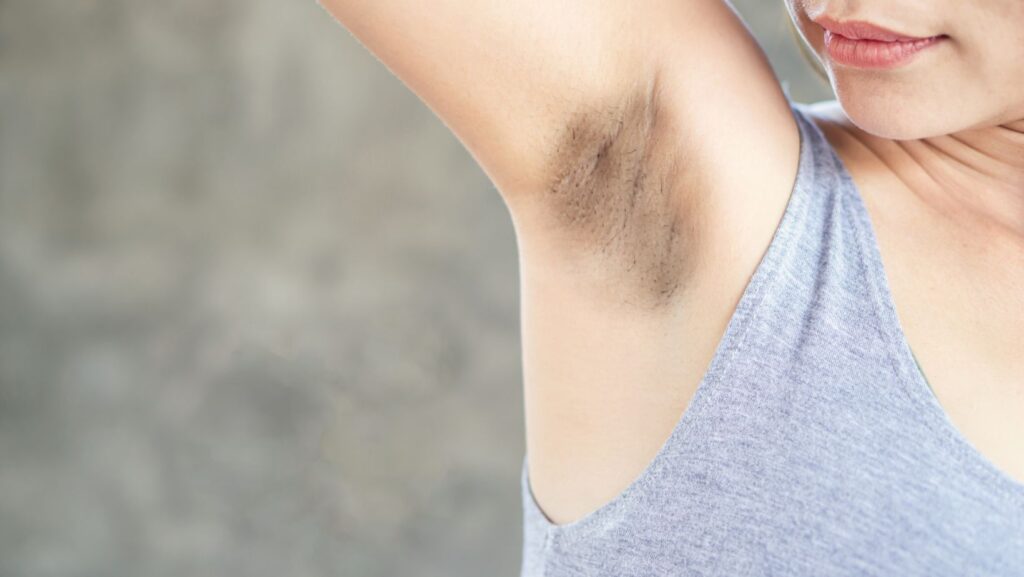Dark underarms are a common issue many people face. This condition happens when the skin under the arms becomes darker than the rest of the body. Several factors can cause this, including friction, hair removal methods, and certain products.
Dark underarms can be treated with various whitening methods, including creams containing ingredients like vitamin C, kojic acid, or niacinamide that help lighten the skin over time. These treatments work by reducing melanin production and removing dead skin cells that contribute to darkness.
Regular exfoliation and proper hygiene also play important roles in managing underarm darkness. Some people find natural remedies helpful, while others prefer professional treatments. Either way, consistency is key when trying to achieve lighter underarms.
Understanding Dark Underarms
Dark underarms occur for several reasons and affect many people regardless of skin tone. The discoloration results from various factors including natural body processes, lifestyle habits, and external irritants.
Causes of Hyperpigmentation
Hyperpigmentation is the main reason underarms appear darker than surrounding skin. It happens when melanin, the pigment responsible for skin color, is produced in excess amounts in certain areas.
This overproduction can be triggered by various factors. Certain medical conditions like acanthosis nigricans, often linked to insulin resistance, can cause darkening of skin folds including underarms.
Dead skin cell buildup also contributes to dark underarms. When old skin cells accumulate, they make the skin appear darker and rougher in texture.
Some personal care products contain ingredients that may irritate sensitive underarm skin. Deodorants and antiperspirants with harsh chemicals can trigger inflammation that leads to darkening over time.
Influence of Genetics and Hormones
Genetics play a significant role in determining underarm skin color. Some people naturally have darker skin in certain body areas due to their genetic makeup.
Hormonal changes can trigger increased melanin production. This is particularly noticeable during puberty, pregnancy, or when taking certain medications.
Polycystic ovary syndrome (PCOS) and other hormonal disorders may cause dark underarms. The hormonal imbalances associated with these conditions can stimulate melanin-producing cells.
Insulin resistance affects skin pigmentation by stimulating growth factors. This can lead to both skin thickening and darkening in the underarm region.
Friction from Clothing and Shaving
Regular friction from tight clothing irritates underarm skin. This repeated irritation triggers the skin’s inflammatory response, leading to post-inflammatory hyperpigmentation.
Shaving creates micro-injuries to the skin surface. When the skin heals from these tiny cuts, it may produce extra melanin as part of the healing process.

Using dull razors increases skin damage and irritation. This heightens the risk of developing darker underarms over time.
Dry shaving without proper lubrication causes more friction. This practice can damage the skin’s protective barrier and accelerate pigmentation issues.
Impact of Perspiration and Skin Irritation
Sweat itself doesn’t cause darkening, but trapped moisture creates an environment where bacteria thrive. This can lead to skin irritation and subsequent darkening.
Chemical irritants from antiperspirants and deodorants may react with sweat. This reaction sometimes causes discoloration in sensitive individuals.
Poor ventilation in the underarm area worsens the problem. When skin doesn’t have a chance to dry properly, continuous moisture can lead to chronic irritation.
Regular exfoliation helps prevent dark underarms by removing dead skin cells. Without this practice, accumulated cells and bacteria contribute to persistent discoloration.
Solutions for Underarm Whitening
Several effective options exist for underarm whitening, ranging from professional treatments to at-home remedies. Each approach offers different benefits depending on severity, budget, and personal preferences.
Professional Treatments
Medical spas and dermatology clinics offer specialized treatments for underarm hyperpigmentation. Chemical peels containing glycolic acid, lactic acid, or kojic acid help remove darkened skin cells. These peels typically require 3-6 sessions spaced 2-4 weeks apart for optimal results.
Laser treatments target melanin in the skin to reduce discoloration. Popular options include:
- Q-switched Nd laser
- Fractional laser therapy
- Intense Pulsed Light (IPL)
These procedures work by breaking down excess pigment while stimulating collagen production. Most patients need 4-8 sessions for significant improvement.
Microdermabrasion gently removes the top layer of skin using tiny crystals, helping brighten the underarm area over time. This treatment is less intense than lasers but may require more sessions.
Professional treatments can cost $100-$500 per session depending on the procedure and location.
Topical Whitening Products
Over-the-counter creams and serums containing specific ingredients can gradually lighten dark underarms. Products with 2% hydroquinone work by inhibiting melanin production. However, this ingredient should only be used short-term under guidance due to potential side effects.
Other effective ingredients include:
|
Ingredient |
How It Works |
|
Vitamin C |
Inhibits melanin, brightens skin |
|
Niacinamide |
Reduces pigmentation, improves barrier |
|
Alpha arbutin |
Blocks tyrosinase enzyme |
|
Kojic acid |
Prevents melanin formation |
|
Azelaic acid |
Anti-inflammatory, reduces pigmentation |
Apply these products daily after showering when pores are open. Results typically appear after 4-12 weeks of consistent use.
Many deodorants now include brightening ingredients. Look for products specifically formulated for sensitive underarm skin to avoid irritation.
Natural Remedies and Lifestyle Changes
Several kitchen ingredients can help lighten underarms naturally. Lemon juice contains citric acid that may lighten skin when applied for 10 minutes before rinsing. However, avoid sun exposure afterward as it increases sensitivity.

Potato slices contain natural bleaching enzymes. Rub a slice on darkened areas for 10-15 minutes daily.
A paste made from:
- 1 tablespoon turmeric
- 2 tablespoons yogurt
- 1 teaspoon honey
Applied for 20 minutes three times weekly can reduce pigmentation due to turmeric’s curcumin content.
Exfoliating gently twice weekly removes dead skin cells that contribute to darkness. Use a soft washcloth or mild scrub specifically for sensitive areas.
Switching to fragrance-free deodorants without aluminum compounds prevents irritation. Wearing loose cotton clothing reduces friction that can worsen hyperpigmentation.
